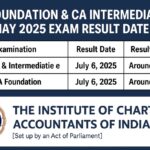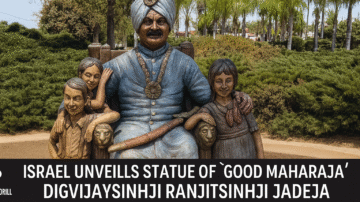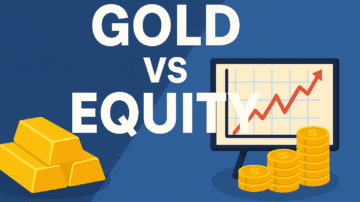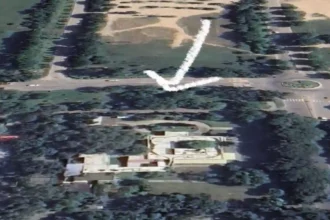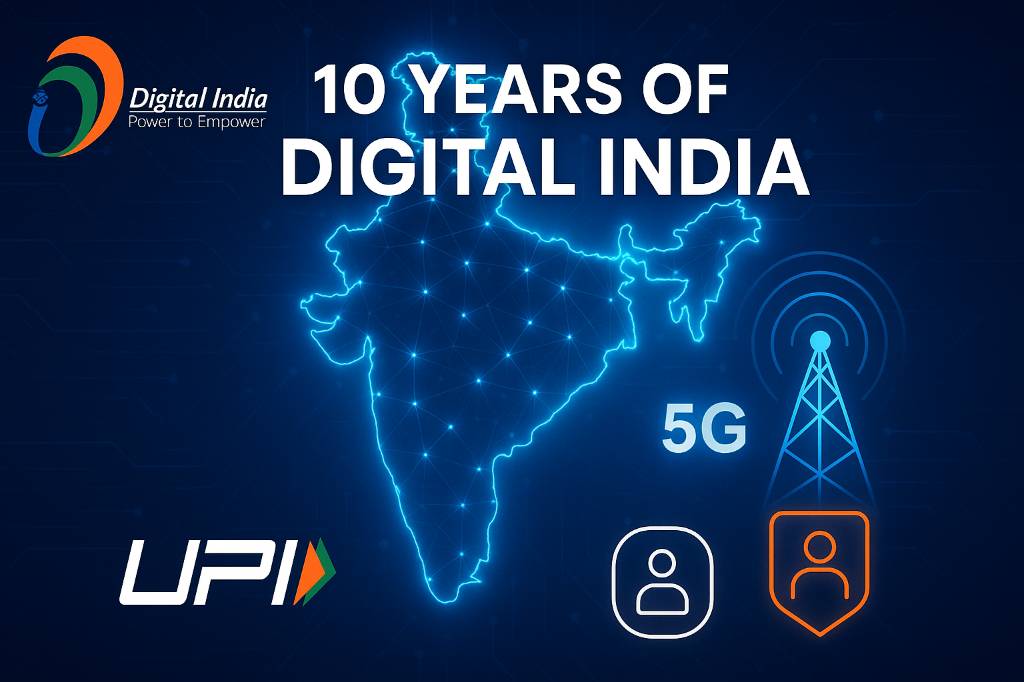
10 Years of Digital India
In 2015, Prime Minister Narendra Modi launched the Digital India mission, a visionary program aimed at transforming India into a knowledge economy and digitally empowered society. As the country completes 10 years of Digital India in 2025, it is no longer just an ambitious policy it has become a transformative force, reshaping governance, empowering citizens, fostering innovation, and positioning India as a global technology leader.
From digital health records and real-time payments to high speed 5G internet and artificial intelligence, India today stands as a beacon of inclusive digital growth. Let us dive into the decade long journey of Digital India, examining its impact, achievements, and the future it envisions.
The Genesis of Digital India
Launched on 1st July 2015, Digital India aimed to bridge the digital divide and ensure that technology reaches every citizen. The initiative was built on three core vision areas:
- 1. Digital Infrastructure as a Utility to Every Citizen
- 2. Governance and Services on Demand
- 3. Digital Empowerment of Citizens
At the time of its launch, less than 20% of India’s population had internet access. Digital infrastructure was limited to urban areas, and government services were mostly offline. The challenge was immense but so was the resolve.
India Leads the World in Real-Time Digital Payments
A decade later, India powers nearly half of the world’s real-time digital transactions. With the advent of the Unified Payments Interface (UPI), digital payments in India witnessed an exponential boom. UPI recorded over 1,300 crore transactions worth over ₹22 lakh crore in a single month in 2025.
Key Highlights:
- UPI is now accepted in over 10 countries.
- India processes more real-time payments than the US, UK, and China combined.
- Financial inclusion has been accelerated through Jan Dhan Aadhaar Mobile (JAM) trinity.
This massive adoption of digital finance has empowered small businesses, gig workers, and even street vendors, bringing them into the formal economy.

Pic Credits: myGOV
5G Rollout Covering 95% of India
India has achieved one of the fastest 5G rollouts in the world, covering 95% of the population in under two years since its launch in 2023. This outpaces regions like Europe, Latin America, and Africa.
Impact of 5G:
- Ultra fast internet for consumers and enterprises.
- Boost to digital startups, IoT, and smart cities.
- Enhanced access to remote education and telemedicine.
- Accelerated automation in manufacturing and agriculture.
From bustling metros to remote rural pockets, 5G is laying the groundwork for India’s Industry 4.0 revolution.


Pic Credits: My GOV
India’s Optical Fibre Network – 11x Earth-Moon Distance
India now boasts over 42 lakh route km of optical fibre, equivalent to 11 times the distance from Earth to the Moon. This vast digital backbone powers the core of initiatives like:
- BharatNet: Connecting over 2.6 lakh gram panchayats.
- e-Governance portals: Such as DigiLocker, UMANG, and eSanjeevani
- Public Wi-Fi hotspots and CSCs (Common Service Centres).
This has democratized access to the internet, enabling millions in remote areas to access digital services.

Pic Credits: MyGov
ABHA Health Accounts Surpass 78 Crore
India is building one of the largest digital health ecosystems in the world. Over 78 crore ABHA (Ayushman Bharat Health Accounts) have been created to date.
Features of ABHA:
- Digital health ID for every citizen
- Secure and interoperable electronic health records
- Easier access to teleconsultations and e-pharmacies
This has streamlined health service delivery, reduced paperwork, and empowered patients with control over their health data.

Pic Credits: MyGOV
e-Governance: From File Notings to Finger Taps
Digital India revolutionized how citizens interact with government services:
- DigiLocker: Over 22 crore users store essential documents like PAN, Aadhaar, and driving licenses.
- UMANG App: 1,400+ services from central and state governments on one platform.
- eSanjeevani: Telemedicine platform with over 15 crore consultations.
- Aadhaar Authentication: Used in over 80 crore e-KYC verifications.
These platforms have saved billions of hours and reduced corruption, making governance more transparent.
Digital Literacy and Inclusion
The success of Digital India lies in its inclusive approach:
- PMGDISHA (Pradhan Mantri Gramin Digital Saksharta Abhiyan): Trained over 6 crore rural citizens in basic digital skills.
- Common Service Centres (CSCs): More than 5 lakh CSCs provide digital services in villages.
- Mobile Internet Growth: India has over 83 crore internet users, a tenfold increase in a decade.
Even in the most remote regions, digital knowledge has sparked a socio-economic upliftment.
Digital India: Fueling Startups and AI Revolution
India’s startup ecosystem is thriving, thanks to Digital India’s policy support and infrastructure:
- Over 1 lakh DPIIT-recognized startups.
- Government platforms like Startup India and Digital India Innovation Fund.
- AI-focused policies launched in 2024 to make India an AI development hub.
- Semiconductors, cloud computing, and drone tech receiving major boosts.
From agritech to fintech, India’s innovation engine is running at full throttle.
A Digital Marketplace for Every Indian: ONDC Empowers Local Sellers Nationwide
India’s digital commerce landscape is undergoing a quiet revolution. In just two years, the Open Network for Digital Commerce (ONDC) has onboarded over 7 lakh sellers, surpassing many long-established e-commerce platforms. What sets ONDC apart is its vision: to democratize digital commerce and make it accessible to every Indian whether it’s a small kirana store in a village or a home based artisan in a town.
Launched with the support of the Government of India, ONDC is a first of its kind open protocol network that enables buyers and sellers to connect and transact across any compatible platform. Unlike conventional marketplaces that operate as closed ecosystems, ONDC breaks down digital silos and offers interoperability, meaning a seller listed on one platform can be discovered by buyers using another.
This open network model is proving to be a game-changer for small businesses, especially MSMEs, street vendors, and local retailers, who often lack the resources to compete with big brands on traditional platforms. ONDC lowers entry barriers, reduces dependence on large aggregators, and promotes fair competition by providing equal visibility and access to digital commerce tools.
By facilitating direct participation from small sellers, the network is also enabling better price discovery for consumers, more product diversity, and support for local economies. From groceries and handicrafts to food delivery and mobility services, ONDC is gradually expanding its reach across sectors.
One of ONDC’s most significant contributions is in bridging the digital divide. With onboarding assistance, multilingual support, and partnerships with banks and fintech firms, even sellers with minimal digital literacy are entering the online economy for the first time. It is making digital commerce inclusive, empowering women entrepreneurs, rural sellers, and traditional artisans alike.
In essence, ONDC is not just a marketplace—it’s a movement to decentralize and democratize e-commerce in India. By unlocking digital opportunities for lakhs of Indians, it is aligning perfectly with the broader vision of Digital India.

Pic Credits: My GOV
As ONDC continues to grow and evolve, it holds the potential to reshape the very foundations of online shopping in India making it truly open, fair, and accessible to all.
Global Recognition to Digital India & Partnerships
India’s digital growth is now studied and admired globally. Major international agencies and forums like World Bank, IMF, and G20 have recognized the scalability and inclusivity of India’s digital public infrastructure.
Countries across Asia and Africa are looking to adopt India’s Digital Public Goods (DPG) models such as:
- UPI (Payments)
- Aadhaar (ID authentication)
- Co-WIN (Vaccination platform)
- DIKSHA (Education)
India’s digital diplomacy is strengthening its soft power on the world stage.
Challenges and Future Vision
While the progress is monumental, challenges remain:
- Cybersecurity threats
- Digital divide in tribal and remote hilly areas
- Digital skilling for future jobs
- Data privacy and governance
However, the Digital India 2.0 Vision 2030 aims to address these through:
- National Data Governance Policy
- AI Mission 2.0
- Universal Digital Literacy
- Expansion of India Stack
India’s roadmap for the next decade is ambitious and geared toward tech sovereignty.
Conclusion
From a developing economy struggling with digital access to a global digital powerhouse, the journey of Digital India over the past 10 years is nothing short of revolutionary. With an unwavering focus on inclusion, innovation, and impact, the mission has empowered a billion citizens and built the backbone of New India.
As the numbers roar, not whisper, Digital India is not just a policy it is a people’s movement, a celebration of what India can achieve when technology is placed in the hands of its people.
FAQs
Q1. When was Digital India launched?
A. Digital India was launched on 1st July 2015 by Prime Minister Narendra Modi.
Q2. How many people use digital payments in India?
A. Over 83 crore people are part of India’s digital payment ecosystem, powered by UPI
Q3. What is ABHA in Digital India?
A. ABHA stands for Ayushman Bharat Health Account, a unique digital health ID for citizens.
Q4. How much optical fibre has India laid under Digital India?
A. India has laid over 42 lakh route km of optical fibre 11 times the Earth-Moon distance.
Q5. What is the coverage of 5G in India as of 2025?
A. 5G now covers 95% of India’s population, one of the fastest rollouts globally.
Stay tuned with The News Drill for more updates.
Contact us: contact@thenewsdrill.com
Pic Credits: My Gov ( Pictures used for graphical representations & easy understanding)


